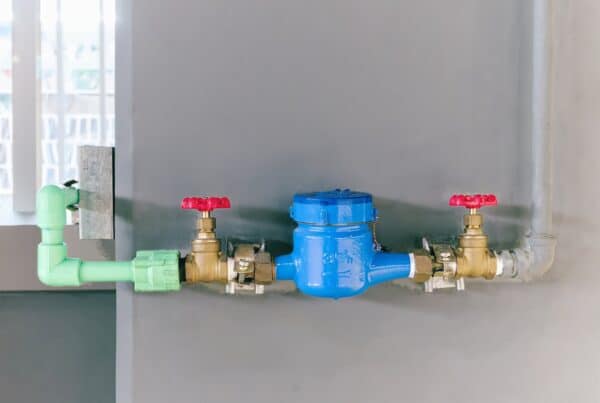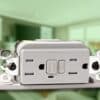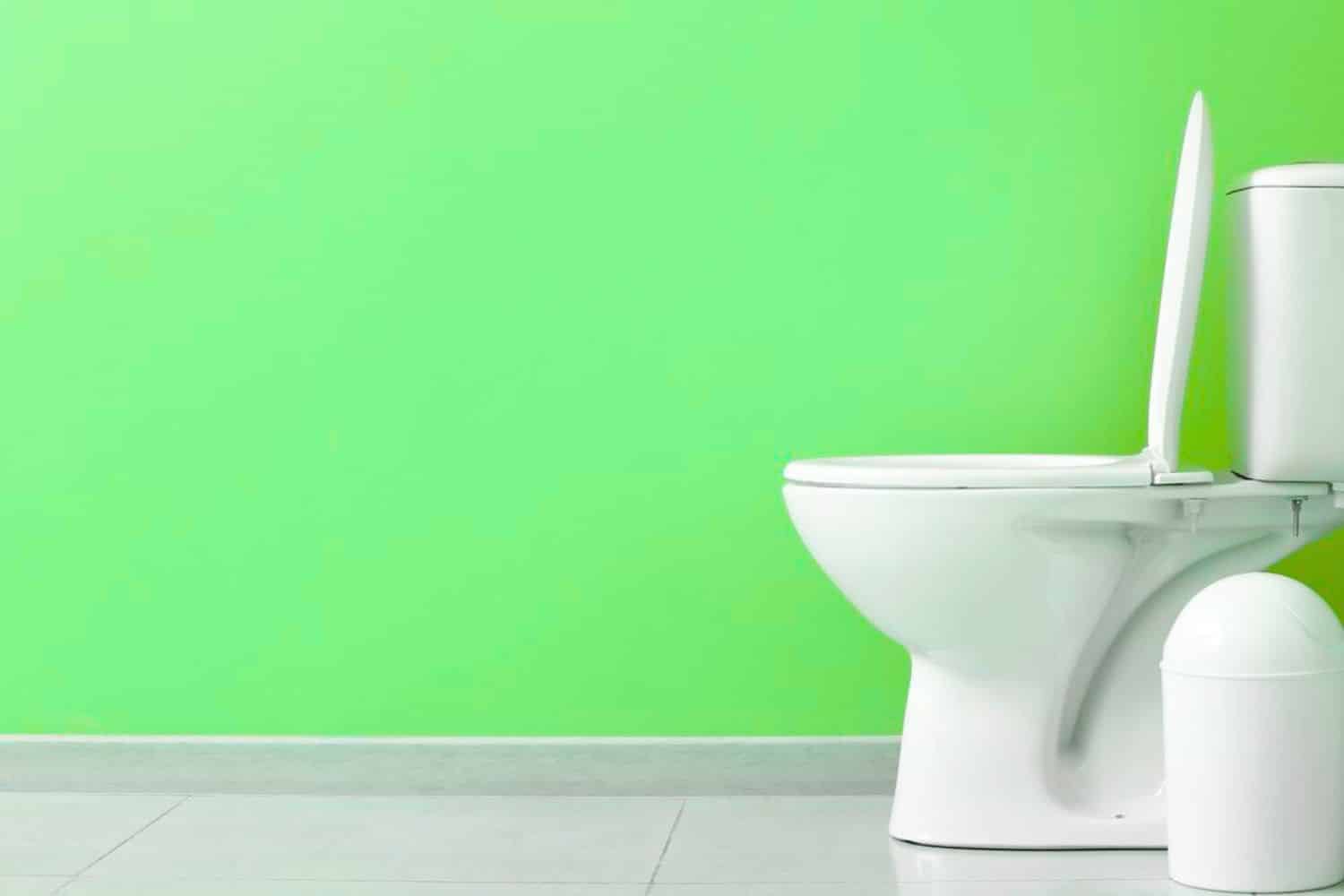
Brown toilet water is never a welcome sight, so who doesn’t want a fix? It looks unpleasant, raises sanitation concerns, and often makes homeowners worry that something serious is wrong with their plumbing.
But not every case of brown water means there’s a costly fix ahead. In many situations, it’s a minor issue that can be resolved with a few simple steps. The key is knowing what’s causing the discoloration and how to respond without making the problem worse.
Let’s walk through the most common causes, how to fix it, and when to get a professional involved.
What Causes Brown Toilet Water?
The most common culprit is rust. Rust can enter your toilet bowl from aging galvanized pipes, an old water heater, or even the municipal water supply.
When iron oxidizes, it turns the water a yellowish-brown or reddish color that can stain porcelain and make the toilet look dirty even when it’s clean.
But rust isn’t the only possible cause. Brown toilet water may also come from:
- Mineral-rich well water
- Sediment in your plumbing
- Debris from a recent water line repair
- A faulty toilet tank component that’s corroding
- Backflow from a partial clog in the drain line
Each of these has a different solution, which we’ll go over below! It’s important to pay attention to what the water looks like and when the discoloration appears.
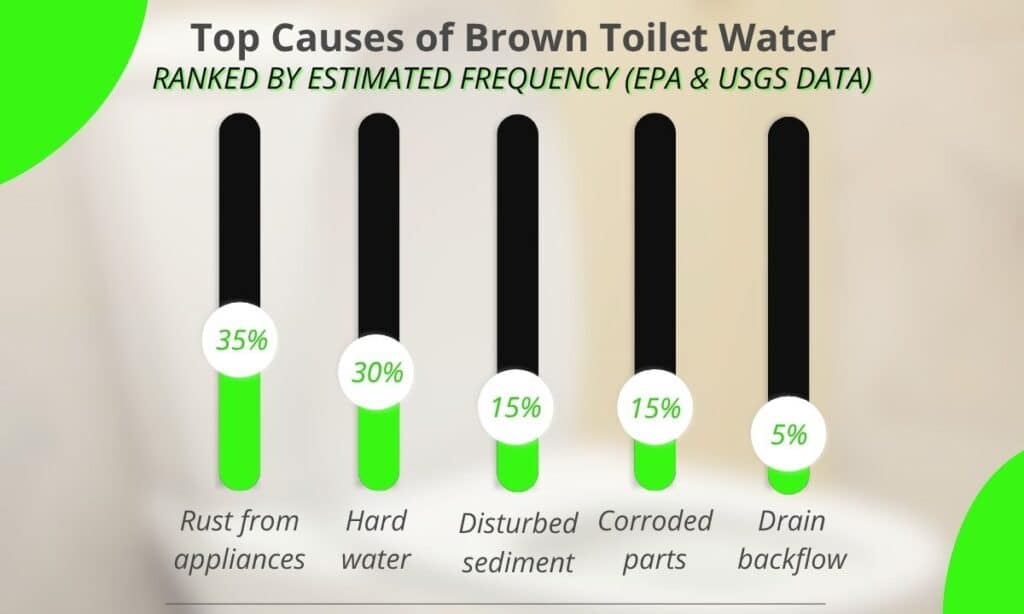
Step 1: Check if the Problem Is in Just One Toilet
Flush each toilet in your home and run cold water from nearby sinks or tubs. If brown water appears in just one toilet, the issue is probably limited to that fixture.
Start by shutting off the water supply to that toilet. Then, inspect the tank for signs of rust, mineral deposits, or degraded parts like a rubber flapper. If the tank water is brown, flush it completely and clean it with white vinegar or a mild toilet-safe cleaner.
Once cleaned, turn the water back on and let the tank refill. If the water stays clear, it was likely a one-time issue. If it turns brown again, there may be rust or sediment coming in through the water line connected to that toilet.
If brown water is showing up in more than one toilet or sink, move to the next step. The source is likely within your plumbing system or water supply.
Step 2: Inspect the Toilet Tank Itself
Carefully remove the tank lid and check the water inside. Is it clear or already discolored? Do you see rust stains, floating debris, or slimy buildup on the walls of the tank?
If the water inside the tank is brown, that means the problem likely starts before the toilet bowl. In this case:
- Flush the toilet to drain the tank
- Scrub the inside of the tank with a toilet-safe cleaner or diluted vinegar
- Refill the tank and observe whether the water stays clean
If it discolors again right after refilling, sediment or rust may be entering through the supply line, often from aging pipes or a corroded shutoff valve.
Step 3: Run Cold Water from Other Faucets
Turn on the cold water from faucets in your kitchen, bathroom, or laundry area. Let the water run for at least two to three minutes.
If you notice discoloration in multiple faucets, the issue is likely in your main supply line. According to the EPA, water utilities sometimes stir up rust or sediment when they flush hydrants or perform maintenance on public water lines. This can temporarily cause brown water to enter your home.
If the discoloration clears after a few minutes, it may be a one-time disturbance. If it returns frequently or never clears, your home may have internal plumbing issues such as corroded galvanized pipes. A water test or plumbing inspection can help confirm the cause.
Step 4: Consider Iron Content
If your home uses well water or you live in an area with naturally hard water, iron could be the root cause.
The U.S. Geological Survey reports that iron is one of the most common elements found in groundwater, and it often causes reddish or brown staining in sinks and toilets.
In this case, the water may always appear slightly discolored, especially after periods of low usage. Iron does not typically pose health risks at low levels, but it can stain fixtures and affect water taste.
Installing a whole-home water filter or iron filter is usually the most effective long-term solution. If you already have a filter and the problem persists, it may need cleaning or replacement.
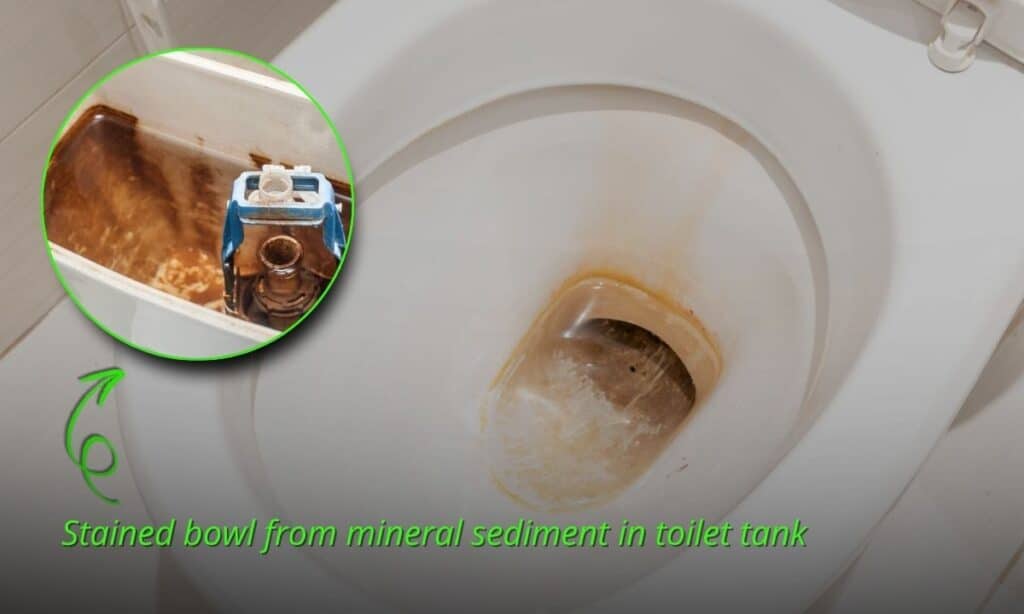
What to Avoid While Troubleshooting
When brown water appears, don’t:
- Use harsh cleaners like bleach before identifying the source
- Ignore the issue for more than a few days
- Assume the water is safe to drink or bathe in if the cause is unknown
- Replace parts blindly without checking the water supply
Cleaning and replacing toilet parts is fine, but if the issue returns or spreads to other areas of the home, professional diagnosis is the safest choice.
Other Questions People Ask About Brown Toilet Water
Can brown toilet water make you sick?
It depends on the cause. If it’s due to rust or sediment, it’s mostly a cosmetic and maintenance issue. But if bacteria or sewer backflow is involved, it could pose health concerns.
Is it safe to use the toilet with brown water?
Usually, yes. But if you notice a foul smell, gurgling sounds, or slow flushing, stop using it and investigate further.
Can my water heater cause brown toilet water?
Yes. If the discoloration only happens when using hot water, sediment in the water heater may be the cause. According to the Department of Energy, flushing the tank annually can reduce this buildup.
Does brown water mean my pipes need to be replaced?
Not always. Sometimes it’s a one-off issue. But if brown water returns regularly or you have galvanized pipes, a plumbing inspection is a good idea.
When to Call a Professional
If you try to fix the brown toilet water and it comes back, don’t just mask the issue. A licensed home inspector or plumber can check your supply lines, test for iron or sediment, and determine whether there’s a larger issue with the plumbing system.
Avalon Home Inspectors look at the bigger picture. If brown toilet water is showing up during a routine inspection, we’ll examine nearby systems for signs of corrosion, drain issues, or water quality concerns.
Whether you’re dealing with aging pipes or preparing to sell, it’s better to solve the issue early than risk water damage or a failed fixture down the line.
Conclusion
Brown toilet water can feel like a small issue, but it often points to larger concerns that need a fix. From water quality to plumbing systems and pipe conditions, knowing what to check and when to get help makes all the difference.
At Avalon Home Inspections, we go beyond the surface. Our team is trained to spot early signs of corrosion, water damage, or aging infrastructure during every inspection. If you’re unsure whether brown water is a harmless inconvenience or the start of a bigger plumbing issue, we’ll help you get answers.

